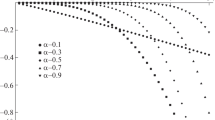We examine the features of the electromagnetic emission of a compact intracloud discharge (CID) within the framework of the fractal approach [1] described in the first part of the article. Compact intracloud discharge is considered as the result of electric interaction of two bipolar streamer-type structures previously developed in the regions of a strong electric field inside the thundercloud. To estimate the electromagnetic emission of the discharge, the complex tree-like structure of the electric currents at the preliminary and main stages of CID was represented as the sum of a relatively slowly varying large-scale linear mean component and fast small-scale constituents corresponding to the initial formation of elementary conductive channels of the discharge tree. Mean linear current of the discharge is considered as an effective source of the VLF/LF emission at both the preliminary and main stages of a CID. Electrostatic, induction, and radiation components of the electric field at different distances from the mean current are calculated taking into account specific features of both stages of the discharge within the framework of the transmission-line model. It is shown that at the preliminary stage only the electrostatic component can mainly be detected, whereas at the main stage all the above components of the electric field can be reliably measured. Dependence of the radiation electric field at the main stage on the length of the discharge channel and propagation velocity of the current front is analyzed. It is found that due to the bi-directional expansion of the current at the main stage of a CID the radiation field pulse remains narrow in a wide range of discharge parameters. The small-scale currents corresponding to the initial breakdown between the neighboring cells of the discharge domain are considered as the sources of HF/VHF radiation. It is shown that HF/VHF emission at the preliminary stage is negligible as compared to emission at the main stage. It is also established that at the main stage, first, the HF/VHF emission burst correlates well with the initial peak of the VLF/LF electric field pulse and, second, its spectrum corresponds to the power law with an exponent between −2 and −1.
Similar content being viewed by others
References
D. I. Iudin and S. S. Davydenko, Radiophys. Quantum Electron., 58, No. 7, 477 (2015).
D. M. Le Vine, J. Geophys. Res., 85, No. C7, 4091 (1980).
J.C. Willett, J.C. Bailey, and E. P. Krider, J. Geophys. Res., 94, No. D13, 16255 (1989).
D. A. Smith, X. M. Shao, D. N. Holden, et al., J. Geophys. Res., 104, No. D4, 4189 (1999).
A. Nag, V. A. Rakov, D. Tsalikis, and J. A. Cramer, J. Geophys. Res., 115, D14115 (2010).
S. Karunarathne, T.C. Marshall, M. Stolzenburg, and N. Karunarathna, J. Geophys. Res. Atmos., 120, 7128 (2015).
W. Rison, R. J. Thomas, P.R. Krehbiel, et al., Geophys. Res. Lett., 26, No. 23, 3573 (1999).
D. A. Smith, M. J. Heavner, A. R. Jacobson, et al.. Radio Sci., 39, No. 1, RS1010 (2004).
K. B. Eack, Geophys. Res. Lett., 31, No. 20, L20102 (2004).
W. Rison, P. R. Krehbiel, M.G. Stock, et al., Nature Commun., 7, 10721 (2016).
K.C. Wiens, T. Hamlin, J. Harlin, and D. M. Suszcynsky, J. Geophys. Res., 113, D05201 (2008).
A.R. Jacobson amd M. J. Heavner, Mon. Weather Rev., 133, No. 5, 1144 (2005).
H. Liu, W. Dong, T. Wu, et al., J. Geophys. Res., 117, D01203 (2012).
D. N. Holden, C.P. Munson, and J.C. Devenport, Geophys. Res. Lett., 22, No. 8, 889 (1995).
A. R. Jacobson, T. E. L. Light, and R. Nemzek, Ann. Geophys., 31, 563 (2013).
M. A. Uman, D.K. McLain, and E. P. Krider, Am. J. Phys., 43, 33 (1975).
A. Nag and V. A. Rakov, J. Geophys. Res., 115, D20103 (2010).
T. Hamlin, T.E. Light, X.-M. Shao, et al., J. Geophys. Res., 112, D14108 (2007).
A. Nag and V. A. Rakov, J. Geophys. Res., 115, D20102 (2010).
C. L. da Silva and V.P. Pasko, J. Geophys. Res. Atmos., 120, No. 10, 4989 (2015).
A. V. Gurevich, G.M. Milikh, and R. Roussel-Dupre, Phys. Lett. A, 165, 463 (1992).
A. V. Gurevich, K.P. Zybin, and R. A. Roussel-Dupre, Phys. Lett. A, 254, 79 (1999).
S. Arabshahi, J.R. Dwyer, A. Nag, et al., J. Geophys. Res. Space Phys., 119, 479 (2014).
H.E. Tierney, R. A. Roussel-Dupre, E. M. D. Symbalisty, and W. H. Beasley, J. Geophys. Res., 110, D12109 (2005).
V. Yu. Trakhtengerts, Dokl. Akad. Nauk SSSR, 308, No. 3, 584 (1989).
S. M. Lazarus, M. E. Splitt, J. Brownlee, et al., J. Geophys. Res. Atmos., 120, 8469 (2015).
A. Y. Kostinskiy, V. S. Syssoev, N.A. Bogatov, et al., Geophys. Res. Lett., 42, 8165 (2015).
Yu. P. Raizer, Gas Discharge Physics, Springer, Berlin (1997).
R. Rompe, W. Weizel, Zeitschrift für Physik, 122, 636 (1944).
A. A. Dul’zon, V.V. Lopatin, M.D. Noskov, and O. I. Pleshkov, Tech. Phys., 44, No. 4, 394 (1999).
S. Sadighi, N.Y. Liu, J. R. Dwyer, and H.K. Rassoul, J. Geophys. Res. Atmos., 120, 3660 (2015).
A. Luque, V. Ratushnaya, and U. Ebert, J. Phys. D: Appl. Phys., 41, No. 23, 234005 (2008).
É. M. Bazelyan and Yu. P. Raizer, Lightning Physics and Lightning Protection, IOP Publishing, Bristol (2000).
É. M. Bazelyan and Yu. P. Raizer, Spark Discharge, CRC Press, Boca Raton (1978).
V. A. Rakov, J. Lightning Res., 1, 80 (2007).
R. Thottappillil, V. Rakov, and M. Uman, J. Geophys. Res., 102, No. D6, 6987 (1997).
D. M. LeVine and R. Meneghini, Radio Sci., 13, No. 5, 801 (1978).
D. M. LeVine and J.C. Willett, J. Geophys. Res., 97, No. D2, 2601 (1992).
Author information
Authors and Affiliations
Corresponding author
Additional information
Translated from Izvestiya Vysshikh Uchebnykh Zavedenii, Radiofizika, Vol. 59, No. 7, pp. 620–637, July 2016.
Rights and permissions
About this article
Cite this article
Davydenko, S.S., Iudin, D.I. Fractal Model of a Compact Intracloud Discharge. II. Specific Features of Electromagnetic Emission. Radiophys Quantum El 59, 560–575 (2016). https://doi.org/10.1007/s11141-016-9723-5
Received:
Accepted:
Published:
Issue Date:
DOI: https://doi.org/10.1007/s11141-016-9723-5




